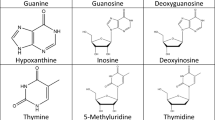Abstract
When a transfected CHO cell, that produces tissue-type Plasminogen Activator, t-PA, was transferred from a medium based on 5% Fetal Calf Serum, FCS, to a medium based on 0.8% casein peptone with variable glutamine and asparagine content, it was observed, that the growth of the cells changed from anchorage dependant to suspension culture giving more reproducible cultivations. In the FCS culture t-PA was unstable, observed as a decline in t-PA concentration after 250 h. This decline in t-PA concentration was not observed in the serum free culture, although there was a decline in productivity after 200 h. This change in production profile may be attributed to either no proteolytic attack from serum or by scavenging of proteolytic activities produced by the cells from the peptone peptides. Increasing amounts of glutamine/asparagine gave higher production of t-PA in synchrony with an increasing production of ammonia/ammonium ions. Ammonia inhibition does not seem to be a key factor for this cell line as seen with many others.
Similar content being viewed by others
References
Damerdji O, Derouiche F, Legrand C, Capiaumont J, Bour JM, Maugras M, Belleville F, Nabet P, Paguet D and Linden G (1988) Utilization of whey fractions as a substitute for fetal calf serum in culture media. Biotechn. Techn. 2 (4): 253–258.
Glacken MW, Huang C and Sinskey AJ (1989) Mathematical description of hybridoma culture kinetics. III. Simulations of fed-batch bioreactors. J. Biotechnol. 10: 39–49.
Hansen HA and Emborg C (1992) Complex medium supplements give difficulties when investigating mammalian cell physiology. In: Spier RE, Griffiths JB and MacDonald C (eds.) Animal Cell Technology: Developments, Processes and Products (pp. 248–249) Butterworth, Heinemann.
Hansen HA and Emborg C (1992) Experimental design in the development and characterization of a high-performance liquid chromatographic method for amino acids. J. Chromatography 626: 171–180.
Hewlett G (1991) Strategies for optimising serum-free media. Cytotechnology 5: 3–14.
Keay L (1975) Autoclavable low cost serum-free cell culture media. The growth of L cells and BHK cells on peptones. Biotech. Bioeng. 17: 745–764.
Kierulff JV (1991) Development of serum-free media for mammalian cell culture. Ph.D. thesis. Department of Biotechnology, The Technical University of Denmark.
Kratje RB, Lind W and Wagner R (1994) Evaluation of the proteolytic potential of in vitro-cultivated hybridoma and recombinant mammalian cells. J. Biotechnol. (in press).
Kurano N, Leist C, Messi F, Kurano S and Fiechter A (1990) Growth behavior of Chinese Hamster Ovary Cells in a compact loop bioreactor:2. Effects of medium components and waste products. J. Biotech. 15: 113–128.
Mizrahi A (1977) Primatone RL in mammalian cell culture media. Biotech. Bioeng. 19: 1557–1561.
Negrotti M et al. (1988) Effects of glutamine and ammonium on hybridoma cell proliferation and antibody production (Abstract). Proc. sec. eng. found. conf. on animal cell culture, Santa Barbara, CA, USA: 65.
Newland M, Greenfield PF and Reid S (1990) Hybridoma growth limitations: The roles of energy metabolism and ammonia production. Cytotechnology 3: 215–229.
Schlaeger EJ and Schumpp B (1989) Studies on mammalian cell growth in suspension culture. In: Spier RE, Griffiths JB, Stephenne J and Crooy PJ (eds.) Advances in Animal Cell Biology and Technology for Bioprocesses (pp. 386–396) Butterworths, Sevenoaks.
Shotwell MA, Jayme DW, Kilberg MS and Oxender DL (1981) Neutral amino acid transport systems in Chinese Hamster Ovary Cells. J. Biol. Chem. 256 (11): 5422–5425.
Stryer L (1988) Biochemistry, Third Edition. W. H. Freeman & Company.
Author information
Authors and Affiliations
Rights and permissions
About this article
Cite this article
Dyring, C., Hansen, H.A. & Emborg, C. Observations on the influence of glutamine, asparagine and peptone on growth and t-PA production of Chinese hamster ovary (CHO) cells. Cytotechnology 16, 37–42 (1994). https://doi.org/10.1007/BF00761777
Received:
Accepted:
Issue Date:
DOI: https://doi.org/10.1007/BF00761777




